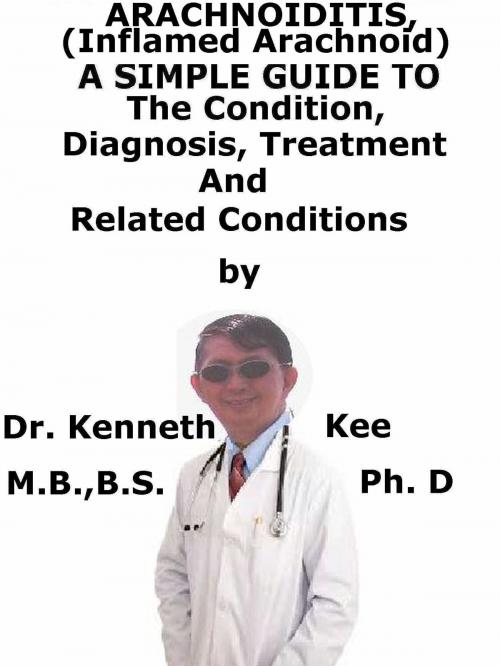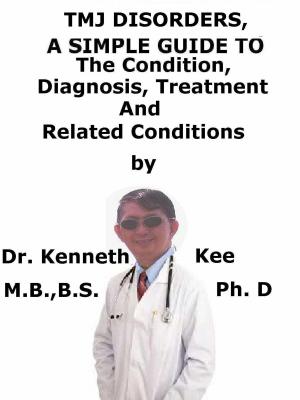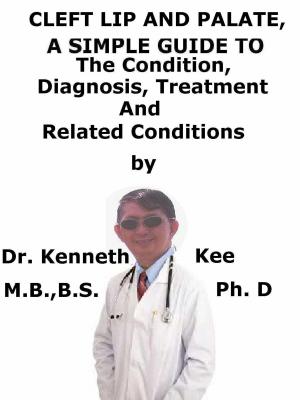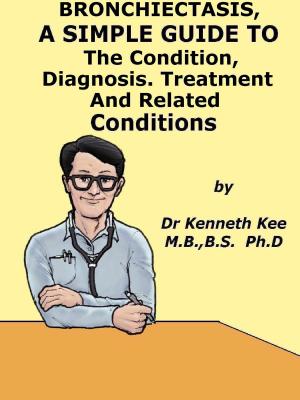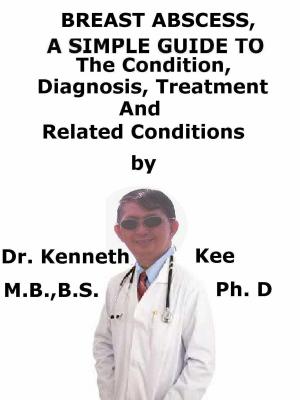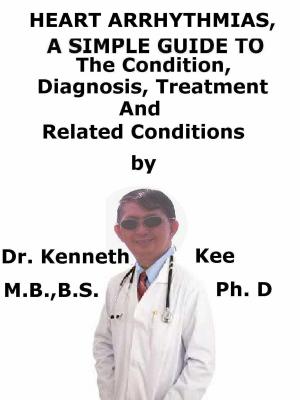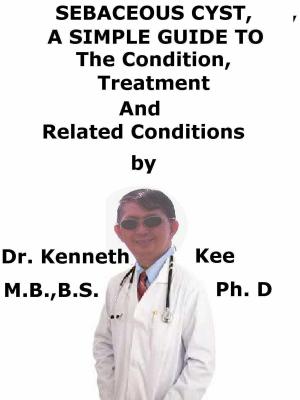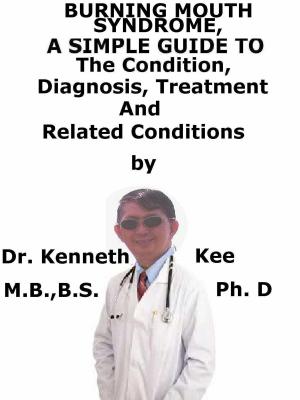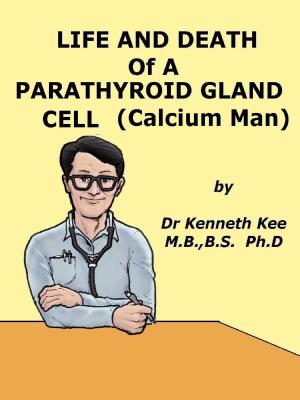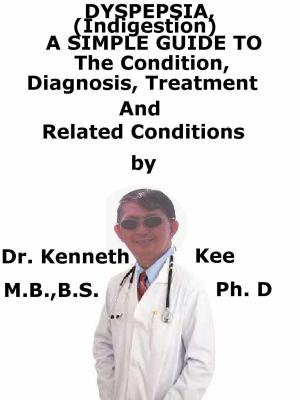Arachnoiditis, (Inflamed Arachnoid) A Simple Guide To The Condition, Diagnosis, Treatment And Related Conditions
Nonfiction, Health & Well Being, Health, Ailments & Diseases, Nervous System & the Brain, Medical, Specialties, Internal Medicine, Neurology| Author: | Kenneth Kee | ISBN: | 9781370333134 |
| Publisher: | Kenneth Kee | Publication: | August 22, 2017 |
| Imprint: | Smashwords Edition | Language: | English |
| Author: | Kenneth Kee |
| ISBN: | 9781370333134 |
| Publisher: | Kenneth Kee |
| Publication: | August 22, 2017 |
| Imprint: | Smashwords Edition |
| Language: | English |
Arachnoiditis is the medical disorder causing inflammation of the arachnoid, one of the membranes called meninges that envelop and protect the nerves of the central nervous system, such as the brain and spinal cord.
Arachnoiditis is a pain disorder caused by the inflammation of the arachnoid, the middle layer of the 3 membranes of the meninges.
As with most inflammatory disorders, when the arachnoid membrane becomes inflamed, it can produce pain.
This inflammation may happen when the spinal cord becomes compressed, whether from an injury or a spinal intervention.
In arachnoiditis, the inflammation results in scar tissue formation.
Scar tissue can cause spinal nerves to stick together improperly.
A way to think of arachnoiditis is a clumping of nerves that are sited inside the spinal canal.
The clumping is likely to happen in a specific region in the spinal canal.
The inflammation of the arachnoid membrane can occasionally result in the formation of scar tissue and adhesions, which induce the spinal nerves to “stick” together.
If arachnoiditis starts to interrupt the function of one or more of these nerves, it can induce a number of symptoms, such as numbness, tingling, and a typical stinging and burning pain in the lower back or legs.
Various people with arachnoiditis will have debilitating muscle cramps, twitches, or spasms.
It may also affect the bladder, bowel, and sexual function.
In serious patients, arachnoiditis may induce paralysis of the lower limbs.
The arachnoid can become inflamed because of:
1. An irritation from chemicals, such as myelogram oil dyes
2. Infection from bacteria or viruses,
3. The result of direct injury to the spine,
4. Chronic compression of spinal nerves,
5. Complications from spinal surgery or other invasive spinal procedures
6. The accidental intrathecal injection of steroids intended for the epidural space
The most frequent symptom is pain, but arachnoiditis can also produce:
a. Tingling, numbness or weakness in the legs
b. Sensations that may seem like insects creeping on the skin or water dripping down the leg
c. Severe shooting pain that can be same as an electric shock sensation
d. Muscle cramps, spasms and non-controllable twitching
e. Bladder, bowel and sexual dysfunction
f. A typical stinging and burning pain in the lower back or legs
g. Paralysis of the lower limbs in severe cases
The gold standard for having a diagnosis of arachnoiditis is using an MRI.
A test called an electromyogram (EMG) can evaluate the severity of the continual damage to affected nerve roots by using electrical impulses to examine nerve function.
Myelograms with the new radiographic contrast medium presently in use, combined with CT scanning, are not regarded to be responsible for arachnoiditis or making it become worse.
Treatment:
There is no cure for arachnoiditis.
The treatment methods are same as those for other chronic pain disorders.
Most treatments direct on alleviating pain and increasing symptoms that reduce daily activities.
Often, doctors advise a program of pain management, physiotherapy, exercise and psychotherapy.
Surgical intervention is debatable since the outcomes are normally poor and give only short-term relief.
Limitations are:
Treatment location: The sub-arachnoid space can be very difficult to reach
Scar tissue formation: surgery cause more scar tissue in the arachnoid space
TABLE OF CONTENT
Introduction
Chapter 1 Arachnoiditis
Chapter 2 Causes
Chapter 3 Symptoms
Chapter 4 Diagnosis
Chapter 5 Treatment
Chapter 6 Prognosis
Chapter 7 Meningitis
Chapter 8 Encephalitis
Epilogue
"One distressing feature I feel is a lack of sexual drive, brought about by an absence of pleasurable sensations, medication, or, simply the pain experienced when trying to make love.
The other distressing problem I feel is the feeling that insects are crawling about the skin causing incessant itching for which there is no treatment."
Arachnoiditis is the medical disorder causing inflammation of the arachnoid, one of the membranes called meninges that envelop and protect the nerves of the central nervous system, such as the brain and spinal cord.
Arachnoiditis is a pain disorder caused by the inflammation of the arachnoid, the middle layer of the 3 membranes of the meninges.
As with most inflammatory disorders, when the arachnoid membrane becomes inflamed, it can produce pain.
This inflammation may happen when the spinal cord becomes compressed, whether from an injury or a spinal intervention.
In arachnoiditis, the inflammation results in scar tissue formation.
Scar tissue can cause spinal nerves to stick together improperly.
A way to think of arachnoiditis is a clumping of nerves that are sited inside the spinal canal.
The clumping is likely to happen in a specific region in the spinal canal.
The inflammation of the arachnoid membrane can occasionally result in the formation of scar tissue and adhesions, which induce the spinal nerves to “stick” together.
If arachnoiditis starts to interrupt the function of one or more of these nerves, it can induce a number of symptoms, such as numbness, tingling, and a typical stinging and burning pain in the lower back or legs.
Various people with arachnoiditis will have debilitating muscle cramps, twitches, or spasms.
It may also affect the bladder, bowel, and sexual function.
In serious patients, arachnoiditis may induce paralysis of the lower limbs.
The arachnoid can become inflamed because of:
1. An irritation from chemicals, such as myelogram oil dyes
2. Infection from bacteria or viruses,
3. The result of direct injury to the spine,
4. Chronic compression of spinal nerves,
5. Complications from spinal surgery or other invasive spinal procedures
6. The accidental intrathecal injection of steroids intended for the epidural space
The most frequent symptom is pain, but arachnoiditis can also produce:
a. Tingling, numbness or weakness in the legs
b. Sensations that may seem like insects creeping on the skin or water dripping down the leg
c. Severe shooting pain that can be same as an electric shock sensation
d. Muscle cramps, spasms and non-controllable twitching
e. Bladder, bowel and sexual dysfunction
f. A typical stinging and burning pain in the lower back or legs
g. Paralysis of the lower limbs in severe cases
The gold standard for having a diagnosis of arachnoiditis is using an MRI.
A test called an electromyogram (EMG) can evaluate the severity of the continual damage to affected nerve roots by using electrical impulses to examine nerve function.
Myelograms with the new radiographic contrast medium presently in use, combined with CT scanning, are not regarded to be responsible for arachnoiditis or making it become worse.
Treatment:
There is no cure for arachnoiditis.
The treatment methods are same as those for other chronic pain disorders.
Most treatments direct on alleviating pain and increasing symptoms that reduce daily activities.
Often, doctors advise a program of pain management, physiotherapy, exercise and psychotherapy.
Surgical intervention is debatable since the outcomes are normally poor and give only short-term relief.
Limitations are:
Treatment location: The sub-arachnoid space can be very difficult to reach
Scar tissue formation: surgery cause more scar tissue in the arachnoid space
TABLE OF CONTENT
Introduction
Chapter 1 Arachnoiditis
Chapter 2 Causes
Chapter 3 Symptoms
Chapter 4 Diagnosis
Chapter 5 Treatment
Chapter 6 Prognosis
Chapter 7 Meningitis
Chapter 8 Encephalitis
Epilogue
"One distressing feature I feel is a lack of sexual drive, brought about by an absence of pleasurable sensations, medication, or, simply the pain experienced when trying to make love.
The other distressing problem I feel is the feeling that insects are crawling about the skin causing incessant itching for which there is no treatment."
